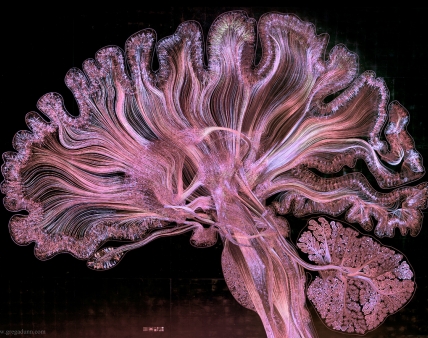Neuroscience Research Aids In Breaking Bad Habits
Science / Technology
Science / Technology

When we think of the word ‘habit’ we tend to automatically associate it with something ‘bad’ or negative. A default mode or behavior that we must try to ‘break’ or quit. Yet not all habits are actually maladaptive to the healthy functioning of our lives. Many habits actually operate as defense mechanisms or shields of protection from real or perceived threats. These threats can be external caused by people or outside situations or threats that we can actually project onto ourselves---think self-sabotage.
We naturally develop habitual ways of responding to pain or threat. Identifying our threat cues can aid in changing our maladaptive ways of coping with the world and external stressors (so-called bad habits) and allow you to work towards creating goal-directed actions (‘good habits”).
A recent study published in online research library, Neuron led by UC San Diego assistant professor of psychology, Christina Gremel highlights the relevance of the endocannabinoid system (ECS) and its relation to decision making, habit forming and goal directed actions.
The study denotes that the brain's circuits for habitual and goal-directed action actually compete for control and that these neurochemicals called endocannabinoids allow for habits to take over, by acting as a sort of brake on the goal-directed circuit.

Endocannabinoids are essentially our bodies’ natural THC. They are the chemical couriers that help maintain homeostasis or optimal balance within the body by regulating mood, appetite, sleep, immune function, fertility, sensory motor control, pain and even memory.
The UCSD researchers found that with use of optogenetics we can increase the output of neurons in the orbital frontal cortex (OFC), the area of the brain, tied to decision making, thus increasing goal-oriented actions.
Optogenetics is essentially controlling cells, namely neurons in living tissue using light. When increases in activity using this biological technique -- turning neurons on and off with flashes of light – the ‘adaptive’ or positive goal-directed actions increased.
In contrast, when activity was decreased in the the same areas the goal directed actions were disrupted and the subjects (mice) then defaulted to rely on habitual (arguably maladaptive) actions instead.
“Habit takes over when the OFC is quieted”.
Gremel went on to state that
“We need a balance between habitual and goal-directed actions. For everyday function, we need to be able to make routine actions quickly and efficiently, and habits serve this purpose. However, we also encounter changing circumstances, and need the capacity to 'break habits' and perform a goal-directed action based on updated information. When we can't, there can be devastating consequences."
The findings may suggest, the authors say, a new therapeutic target for people suffering from OCD or addictions.
By gaining control of our mind and by stopping the overreliance on habit and restore the ability to shift from habit to goal-directed action we can then begin creating our external and internal optimal realities on our own terms.
It is incredible to watch what science is discovering about our internal realities and the biological techniques we can access to help aid us in living more productive and positive lives.
The first step is identifying the triggers for your habits and learning to re-direct the ‘bad habits’ into more goal-oriented, positive behaviors
The greatest habit you can ever break is the habit of being yourself.
-Dr. Joel Dispenza
